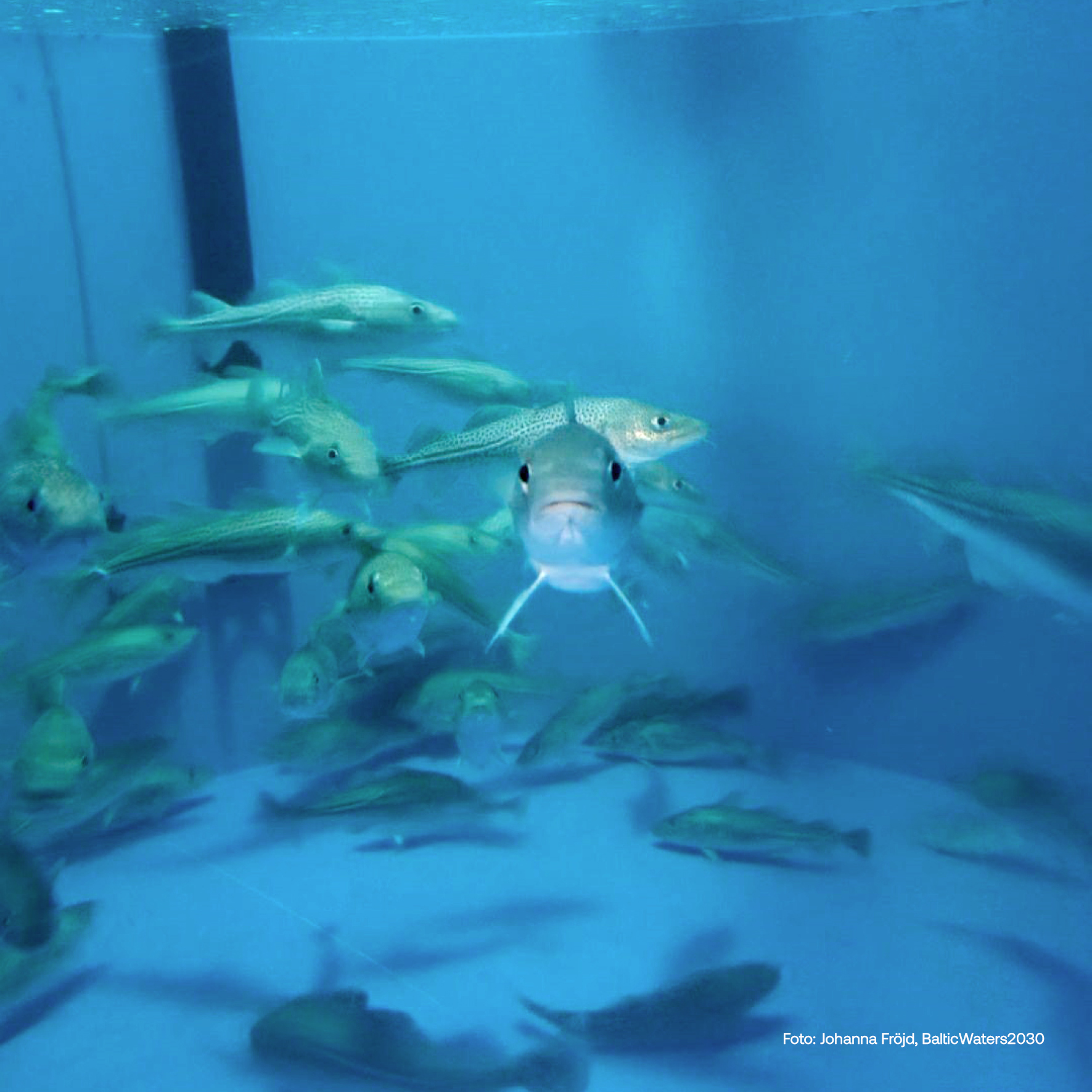In 2020, BalticWaters and Uppsala University launched a five-year programme that can only be described as bold. ReCod – release of small cod in the Baltic Sea is designed to investigate whether the Baltic’s cod stock can be strengthened by releasing cod larvae into the Sea. This may sound simple, but there are many steps along the way and many things that need to fall into place.
Doing everything for the first time
Johanna Fröjd, project manager for the ReCod project, pulls on a thick down jacket before entering the 7ºC room where the cod pools are kept. The room is kept cold to ensure that the water temperature is at the right level. Johanna knows all there is to know about the cod at Ar, how the water treatment systems work, and the conditions in the water each day. But this hasn’t always been the case. The research station, rebuilt to accommodate cod, was completed in late 2020. The first cod moved in soon thereafter. But there is no textbook for keeping cod, hatching larvae, and releasing them into the Baltic Sea – these are things the ReCod project team had to learn along the way.
About ReCod
The project is carried out at the Ar research station on Gotland, in the middle of the Baltic. ReCod conducts trials with the release of 4 – 6-day-old cod larvae at selected sites along the Baltic’s east coast and examines whether the larvae survive and manage to establish themselves. If the trials succeed, cod can potentially be re-established in the Baltic in additional areas – increasing the chances of preserving and protecting the unique eastern stock.
’You need to be a bit of an inventor,’ says Johanna. ‘This is the first real year of operation, with the cod spawning at Ar and eggs being produced and hatched – so we’ve learned a huge amount in a very short time. It’s extremely work-intensive and terrifically exciting.’
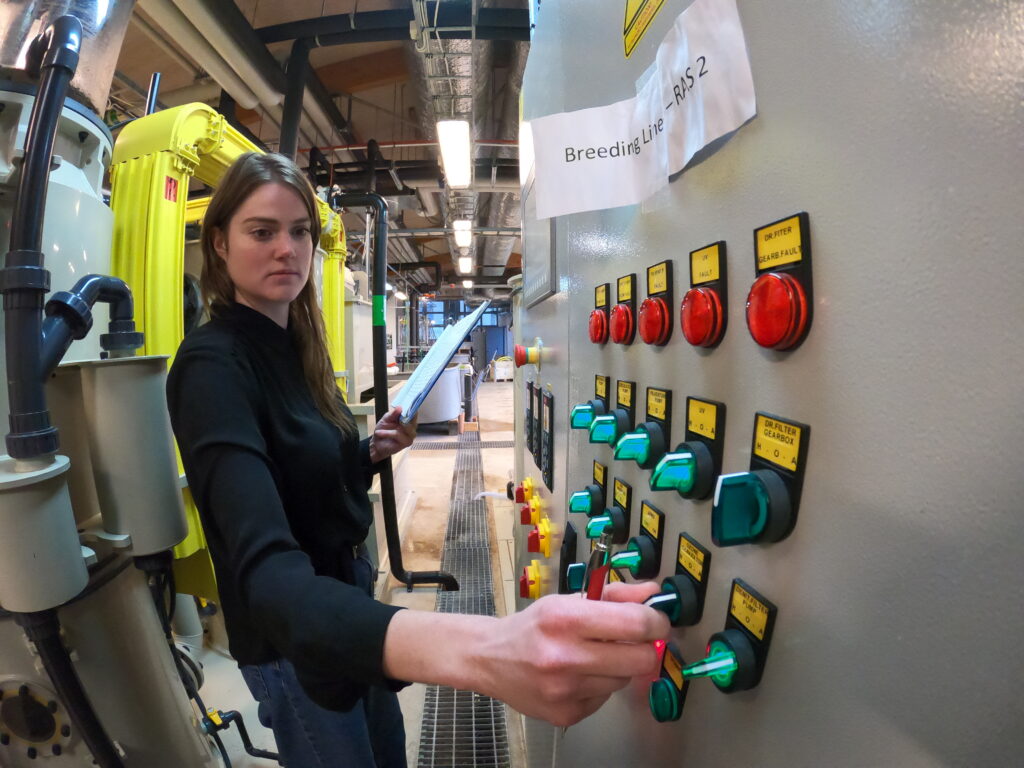
Johanna Fröjd, project manager ReCod, BalticWaters.
The first cod were moved to Ar back in March 2021, and two groups have moved in since then. But fishing for cod for the project has proved challenging.
‘The cod we fish for the project need to be fished as gently as possible. We want them to be in good condition when they come to the station. But fishing methods aren’t designed in this way. Cod live at great depths, so our fishing method needs to be very gentle and slow so the fish aren’t injured and don’t get decompression sickness,’ says Johanna.
During the first year at Ar, Johanna also noticed that the cod need a long time to acclimatise to life at the research station – otherwise, they won’t spawn. So before next season, the goal is to catch the fish six months before the start of the spawning period to allow plenty of time for the cod to rest and eat.
Spawning never really got underway at the research station in 2021. Some cod were simply in too poor condition, either because they were too small or weak or because they didn’t acclimatise to life at the station. But this year, the cod made a powerful comeback.
’Once spawning started, we quickly realised that we’d underestimated the amount of eggs the female cod at Ar were producing,’ says Konrad Stralka, executive member of BalticWaters.
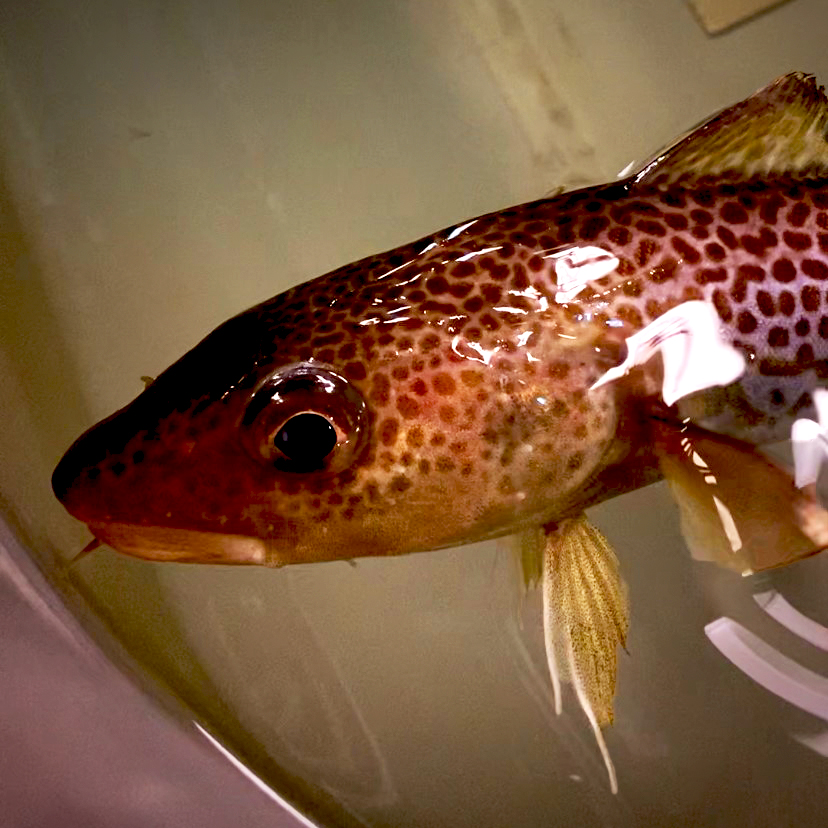
Cod newly arrived at Ar, Photo: Madeleine Kullenbo, BalticWaters.
Today, the cod at the research station are in very good condition, and the fact that they’re spawning is a sign that they are doing well.
‘The cod that have been at the station the longest have increased a lot in weight and length. They look like cod are supposed to look,’ says Johanna.
Love at Ar
Baltic cod reach sexual maturity at around 2 years of age and spawn from May to August. Specific conditions are required for the females to release their eggs. The water needs to be around 7ºC with a salinity level of at least 12 per mil and an oxygen content of at least 8 mg/litre (5.6 ml/l). The same applies to the males’ sperm, which need these same conditions in order to swim. Watch a short film here from cod spawning at the Ar research station.
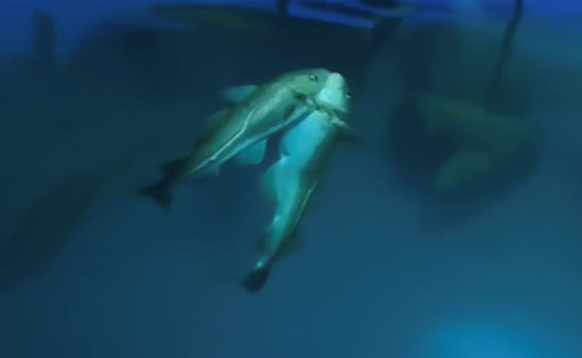
Mating begins with courtship – the male swims with his stomach turned towards the female. Photo: Johanna Fröjd, BalticWaters.
The eggs then float to the surface, where they are collected by the egg collector and moved to incubation units where the larvae will hatch. It takes around 12 days from fertilisation to hatching if the water maintains a temperature of 7ºC. Once the larvae hatch, they live of their yolk sac for 4 – 6 days. When the yolk sac is consumed, the larva’s jaw is fully formed and it starts foraging on its own. Larvae at Ar are not released until they have consumed the entire yolk sac.
From egg to larva to cod in the Baltic
Once the larva is released, during its initial stage it lives freely in the body of water and eats mostly zooplankton. Cod larvae can swim but only very poorly at first, so they follow the water’s currents. When the cod larva is about 1 – 1.5 months old, it had grown and developed into a small cod. It then moves closer to the coast and towards the sea bed to feed on crustaceans and other small animals, and when it eventually grows larger it moves into deeper water where it eats mainly fish. Several factors determine the amount of time it takes from fertilisation to developed cod, including food availability and temperature. But few eggs become adult cod – cod egg mortality is over 99% in the wild, and mortality rates are also high for cod larvae.

Larvae have developed in fertilised eggs.
’One of the project’s challenges is that cod in the Baltic are living so close to the limit of being unable to reproduce. There are cod as far up as Åland, but the salinity level there is so low that the cod’s eggs are unlikely to survive. But this is just one of many questions the project will examine in coming years,’ says Konrad.
Many challenges await the larvae hatched at the research station – one of which is transport to the release site and then release into the Baltic Sea.
‘This year we released around 800,000 larvae, but we don’t yet know how many have survived. So future data analyses, test fishing and scientific monitoring will be key components of the project,’ says Konrad.
Prior to release, test fishing and thorough sampling was conducted in selected bays. A total of 15 releases were done during the summer: one in Baggensfjärden in the Stockholm archipelago, four in Tvären outside Nyköping and ten in Kappelshamn on Gotland. The bays were selected because they have the conditions necessary to give the larvae a good chance of survival. Baggensfjärden and Tvären are more enclosed bays, which improves the likelihood that the project will be able to recapture the cod in future. Kappelshamn is a more open bay, which makes recapture more difficult.
’This first year, we’ve focused on learning how the releases should be done in order to be as gentle as possible on the cod larvae. It’s easier to do more releases here on Gotland, where the research station is, but next year we’ll focus on doing most of the releases in Baggensfjärden and Tvären,’ says Johanna.
Spawning has now ended, and in mid-August the final release of the year was done. Calm has settled over the research station – but it won’t last long. To ensure genetic variation during next season’s spawning, the cod at Ar will be exchanged and new fish will be moved to the station during the autumn. But a lot needs to be done before then.
’After the 2022 field season, we’ll evaluate what we’ve done well and what we can improve to next year. We’ll also service the facility and make improvements. Among other things, we’re going to increase the number of incubation units so we have room for even more eggs and larvae next season,’ says Johanna.
Focus on research this autumn and winter
While Johanna and her colleagues look after the cod and station, the project’s doctoral students Neele Schmidt and Maddi Garate Olaizola have a different focus. Maddi and Neele spent most of their time during the summer in the field or laboratory conducting experiments, and will be conducting extensive analyses of all collected data during the autumn. Maddi’s doctoral project examines early life stage phenotypic and genetic variations in cod from the eastern Baltic stock, with a focus on how the marine environment affects cod eggs and larvae and the potential to improve survival during these stages.

Maddi Garate Olaizola during experiment on cod egg buoyancy under different environmental conditions . Photo: Madeleine Kullenbo, BalticWaters.
’During the summer I did experiments with eggs and larvae incubated in various salinity levels and temperatures, and examined how larvae react when they’re released in lower salinity. I’ve collected data on survival rates and buoyancy under different environmental conditions, and I’ve taken samples of larvae for genetic analysis. Data on the larvae’s survival rate and buoyancy will now be digitalised and analysed, and during the autumn and winter I’ll look at which genes were expressed during egg and larval incubation and the change in salinity,’ says Maddi.
Neele’s doctoral project deals with the methodology for producing and introducing cod eggs and larvae in the Baltic, and with the monitoring of releases in the field.
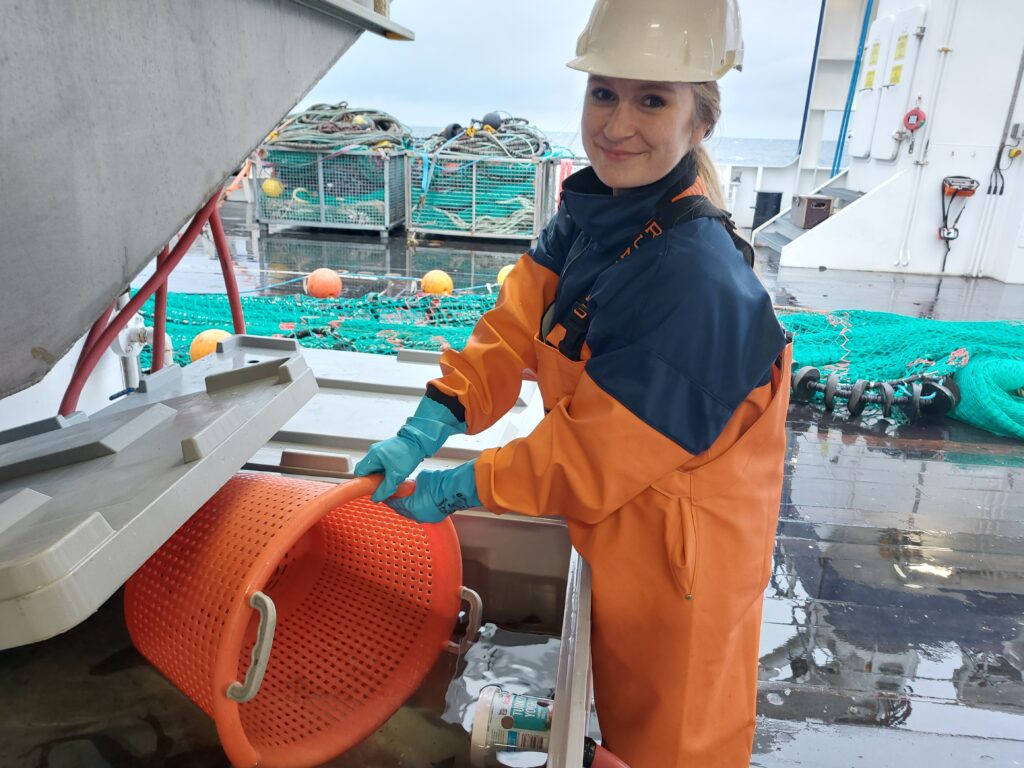
Neele Schmidt aboard Svea to fish cod for the ReCod project. Photo: Henrik Pärn, SLU.
’I will be focusing on processing and analysing all the data we’ve collected this year – eDNA, fishery data and plankton. The plankton samples, for instance, will provide information on the larvae’s food availability in the different release bays. I’ll also plan next year’s experiments and field work, which will include marking the larvae’s otoliths,’ says Neele.
Even though the project has shifted focus now that spawning season is over, everyone involved in the project is almost certainly thinking about how the released cod larvae are doing.
‘I hope our larvae survive, grow into adult cod and are able to reproduce, so they can contribute to the Baltic cod stock. We’re all doing this work based on that hope,’ says Johanna.
We can’t help but agree and wish this year’s cod larvae the best of luck!

Last but not least: Meet our summer staff!
The summer season is intensive for the ReCod project. We were lucky to have the help of Amalia and Lovisa for a few months this year. Their duties included helping take samples, looking after the cod and larvae, helping release the cod larvae into the Baltic and supporting the doctoral students in various experiments.
’ReCod is an absolutely fantastic project, with lots to win and little to lose. I’ve really felt involved in something big, which is an incredibly powerful feeling,’ says Lovisa, who studies Biomedicine at Umeå University.
’What I loved about my time with the project was that there was always so much happening. Every week we were in the field releasing larvae, and I was also at the research station a lot taking care of the cod. I also had the opportunity to work on the experiments,’ says Amalia, a biologist and Ecology student at Uppsala University.
Are you interested in a summer job at Ar next year? Keep an eye on our website!

